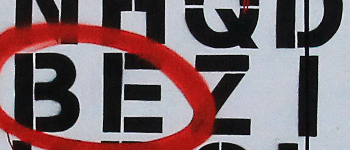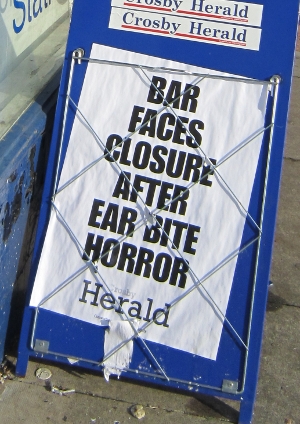Give or take the economic crisis and the newest data about the chemical composition of the Moon, NaNoWriMo seems to have been the hottest topic in the blogosphere again this week. Pretty much everyone on my blogroll posted about it, even if only to say they weren’t entering or had never entered (Just one question–what kind of egotist decides that particular piece of info is worthy of publication?) So once more I’m NaNo’d out, and this a full week before NaNo even begins. But I suppose this is a case of the pot calling the kettle black, since Matt and I both polluted the intertubes with our own musings on the matter mid-week too.
With this overflow in mind, I’ve linked solely to the posts that may be useful to this year’s contenders–and trust me when I say there were only four! Two contain cautionary tales (Jen Brubacher’s 2010 Plan and Andrea Allison’s What’s Your NaNo?); the other two have some useful resources–particularly Lynn Viehl’s NaNoFun, but I liked Suzannah Freeman’s resource page primarily because she didn’t assume, as so many do, that everyone signs up for NaNoWriMo with the single aim of publication.
And so to the Anti-NaNo posts, so to speak.
You couldn’t get much further from the aims of NaNoWriMo than Iain Broome managed with his post advocating quality over quantity. Sarah J Maas had a good try, though, with her Let The Words Flow entry on the importance of research. Brian Hodge reiterated the notion of research as lifestyle with his post, entitled Do It All Or Die Trying: The Way Of The Renaissance Writer. Germaine Greer–yes that Germaine Greer–doesn’t quite view that kind of thing as research, and explained in the Guardian this week why she’s convinced, on the evidence of this year’s Booker finalists, that fact-checking is a lost skill. The title of her article: Peter Carey? Doesn’t know his leeches. Tom McCarthy? Bad on moths.
Wonderful stuff.
Also in the Guardian this week, Rick Gekoski mourned the passing of a common narrative bound by a collective literary and cultural repertoire. It raised a smile here, anyway. Anyone else remember T.S. Eliot’s The Waste Land, an epic poem written in 1922 making exactly the same point Gekoski made in 2010? *
Plus ça change, plus c’est la même chose.
K M Weiland stepped back into NaNo territory (as I see it, leastways) with her guest post on Mystery Writing is Murder about tapping into unconscious creativity. She followed up with an insightful post on her own blog on the need to love your characters. In fact there were a number of strong posts about characterisation this week; Natalie Whipple’s, on the fashion for “strong” female characters, aroused much comment among the regular bloggerati. I also liked Sammy Bina’s observations about “bad” boys, which raised some similar points. Marvin D Wilson, again posting as a guest on Mystery Writing…, noted that a common giveaway in amateur fiction is the voice of the author surfacing through multiple characters, and gave some nice tips for avoiding this pitfall. He also shared more standard advice about building characters, recommending a character journal as memory jogger and template.
Bryan Russell and Scott G F Bailey both chose to wrote about descriptive detail this week. Bryan looked at the dangers of overstepping the contract the author has with the reader. Scott sparked an informative debate about acceptable levels of description in contemporary fiction. Short version: it depends on the genre, the author, the story and the reader!
Jody Hedlund went in for some myth-busting, contrasting the assumptions people have about published authors with the actualité.
Kat Zhang had a moment of rebellion and published an article suggesting that it might not always be a good idea to open a story with action, after all. Scott G F Bailey, who has been experimenting widely with structure of late, wrote an interesting piece on story and nested structures. Elizabeth Spann Craig went one better and posted a blog entry advocating plot simplicity. I’m not sure that this is transferable across all genres, but it certainly works for horror plots!
While I’m on the subject of horror, here are two oh-so-tenuously related posts that tickled my fancy this week. The first is from Paul Anderson on the topic of the author he would most like to dine with. The second, a typical io9.com subversion of a genuine statistical enquiry into the colour of dragons in North America these days.
Enjoy!
* I sure hope so–otherwise both those doomsayers are proved right!




